
Essential Guitar Chords for Absolute Beginners
Essential guitar chords for beginners include C, G, D, A, and E major. Mastering these beautiful guitar chords opens doors to countless songs. Try them all!
magicchords.com


Learning essential guitar chords is the first step for absolute beginners to start playing their favorite songs. Chords like C, G, D, A, and E form the foundation of countless musical pieces across genres. Mastering these basic chords helps develop finger strength, hand coordination, and rhythm.
🎸 Post Content:
With just a few chords, beginners can unlock simple progressions and play recognizable tunes. This guide focuses on teaching these foundational chords and offering tips to make learning easy, enjoyable, and rewarding for new guitarists.
Stay with magicchords.com: Guitar Strings for Beginners - How to Choose the Perfect Set for the Best Sound?
Introduction to Essential Guitar Chords
Learning essential guitar chords is the foundation for any beginner's journey into music. Chords are the building blocks of countless songs, and mastering them allows you to play melodies, harmonies, and rhythms. As an absolute beginner, starting with a few basic chords—such as C, G, D, A, and E—is crucial. These chords are commonly used in a wide range of songs, making them versatile and rewarding to learn.
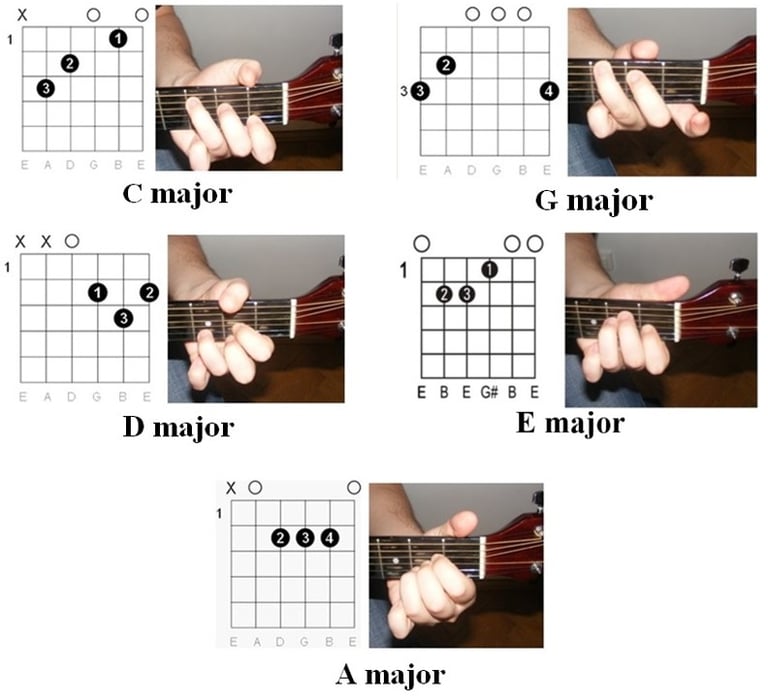

Each chord involves placing your fingers on specific strings and frets to produce harmonious sounds. Though it may feel challenging at first, with practice, your fingers will gain strength, flexibility, and muscle memory. Additionally, learning smooth chord transitions and strumming patterns will enhance your playing ability. By focusing on these essential chords, you'll build a solid foundation, opening the door to countless musical opportunities and helping you progress confidently on your guitar-playing journey.
Top 5 Chords Every Beginner Should Learn
When starting to learn the guitar, mastering a few basic chords can set the foundation for a lifetime of musical enjoyment. The top five chords every beginner should learn—C Major, G Major, D Major, A Major, and E Major—are fundamental to countless songs across genres. Let’s explore each and why they’re so important.
C Major Chord
The C Major chord is one of the most common chords in music. Its warm, bright sound makes it a cornerstone of pop, rock, and folk. Although it requires stretching your fingers, it’s an excellent chord for building strength and flexibility in your fretting hand.
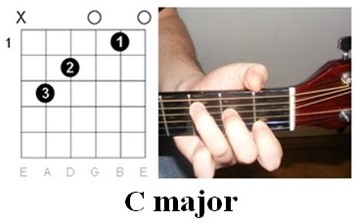

G Major Chord
The G Major chord is versatile and appears in countless songs. Its full, rich tone is ideal for strumming patterns, making it a favorite among beginners. The finger placement can feel tricky at first, but regular practice ensures clean transitions.
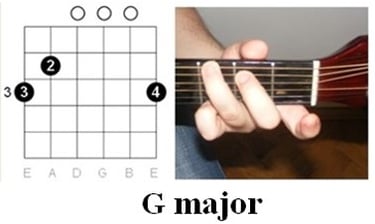

D Major Chord
The D Major chord is another essential, often used in rock, country, and blues. Its compact shape is easier to play for many beginners. D Major teaches you precision, as it requires strumming only specific strings.
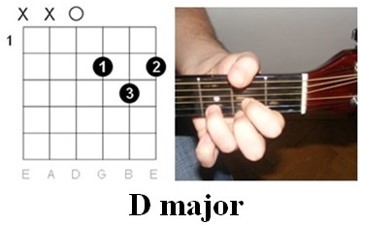

E Major Chord
The E Major chord is one of the easiest for beginners and produces a deep, resonant tone. It’s fundamental to blues and rock and serves as an introduction to open-position chords.
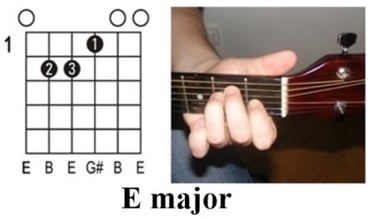

A Major Chord
The A Major chord has a bright, happy sound and is relatively simple to play. It’s a great chord to strengthen your fretting fingers while learning to keep them close together on the fretboard.
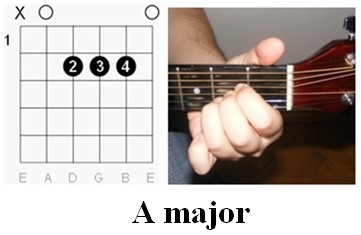

Why These Chords Matter?
These five chords are the building blocks of many chord progressions, such as C - G - D or G - D - A - E, which are featured in countless popular songs. Practicing these chords improves finger dexterity, muscle memory, and timing, which are essential skills for guitarists.
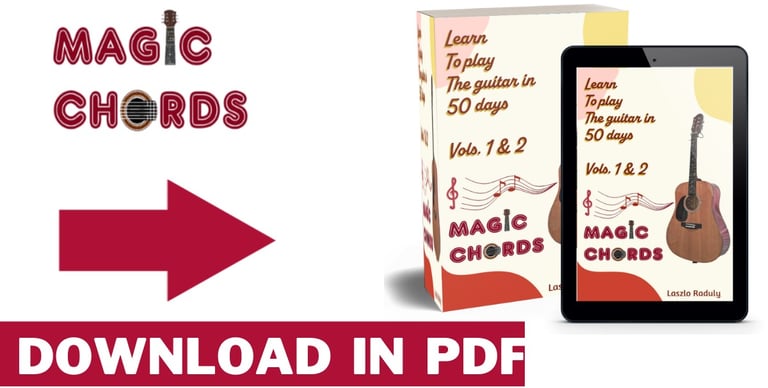

To make learning smoother, focus on forming each chord cleanly before moving to the next. Practice transitions between chords slowly, and use simple strumming patterns to build confidence. Playing along with songs that use these chords will reinforce your learning and make practice enjoyable. Mastering these top five chords will unlock hundreds of songs and pave the way for your musical journey. Keep practicing, and soon you’ll be strumming like a pro!
Tips for Smooth Chord Transitions
Smooth chord transitions are a critical skill for guitarists, especially beginners, as they make your playing sound seamless and professional. Here are some tips to improve your transitions: Learn the correct finger positions for each chord and visualize the next chord before switching. This helps your fingers move more efficiently. Some chords share common finger placements. For example, the ring finger remains on the same string when transitioning between C and G. Use these "anchor fingers" to speed up your changes.


Practice transitions slowly at first, focusing on accuracy rather than speed. Gradually increase your pace as you gain confidence. Work on easy progressions like G - C - D to build muscle memory. Consistent short sessions are more effective than occasional long ones. By focusing on these techniques, your transitions will become smooth, making your playing more fluid and enjoyable.
Common Chord Progressions for Beginners
Chord progressions form the foundation of countless songs, making them an essential skill for beginner guitarists to master. A chord progression is a sequence of chords played in a specific order, providing harmony that supports the melody. By learning a few common progressions, beginners can quickly play popular tunes and gain a deeper understanding of music.
One of the simplest and most versatile progressions is the I-IV-V (1-4-5) pattern, such as C - F - G or G - C - D. This pattern is prevalent in rock, pop, and blues, giving it universal appeal. Another frequently used progression is the I-V-vi-IV (1-5-6-4), such as G - D - Em - C, which appears in many ballads and chart-topping hits.


To master these progressions, practice switching between chords smoothly and strumming in time. Start slowly and build speed gradually. Playing along with familiar songs using these progressions will help reinforce timing and rhythm while making practice more enjoyable.
Practice Tips for Building Chord Confidence
Building chord confidence is crucial for beginner guitarists and requires consistent, focused practice. Start by mastering a few basic chords, such as C, G, D, A, and E, ensuring each chord rings out clearly. Focus on proper finger placement and maintain relaxed hand posture to avoid strain.


Practice switching between chords slowly, using common progressions like G - C - D, to develop muscle memory. Break transitions into smaller steps, pausing to adjust your fingers when needed. Over time, aim to transition seamlessly without stopping.
Using a metronome helps maintain steady timing, even at slower speeds. Gradually increase your speed as you gain confidence. Incorporate strumming patterns that match your skill level to improve rhythm and coordination. Regular, short practice sessions are more effective than occasional long ones. Play along with simple songs that use the chords you're learning to make practice fun and motivating. With persistence, your chord confidence will grow significantly!
Conclusion: Building Your Guitar Foundation
You didn’t come this far to stop, so play: Simple Chords for New Guitarists / Eddy Grant – I Don’t Wanna Dance


Building fundamental guitar skills is essential for every beginner’s musical journey. Mastering basic chords, smooth transitions, and simple strumming patterns lays a solid foundation for playing countless songs. Consistent practice, attention to technique, and patience are key to developing confidence and coordination. By focusing on these core skills, you’ll not only improve your playing but also gain the tools to explore more advanced techniques in the future. Remember, every great guitarist started with the basics—so enjoy the process, stay motivated, and keep strumming!




